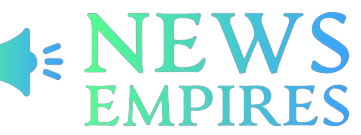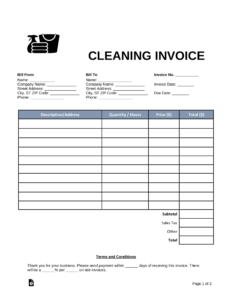When it comes to sending letters, invitations, or important documents, envelopes play a vital role in protecting and presenting the contents within. However, envelopes are not just functional; they can also be a powerful tool for communication and branding. In this article, we will explore the world of envelope designs, from the importance of a well-designed envelope to the various creative possibilities they offer.
The Importance of Envelope Designs
An envelope is the first point of contact between the sender and the recipient. It sets the tone for the entire communication and can greatly impact the recipient’s perception of the contents inside. A well-designed envelope can capture attention, create anticipation, and even evoke emotions. It is an opportunity to make a lasting impression and enhance the overall experience of receiving a letter or package.
Moreover, envelope designs can also serve practical purposes. For example, a well-designed business envelope can convey professionalism and credibility, while an invitation envelope can set the mood and theme for an event. By carefully considering the design elements, typography, and materials used, envelopes can effectively communicate the message and purpose of the enclosed content.
Creative Envelope Design Ideas
Now that we understand the importance of envelope designs, let’s explore some creative ideas that can make your envelopes stand out:
1. Custom Illustrations
Incorporating custom illustrations on the envelope can add a personal touch and make it truly unique. Whether it’s a hand-drawn artwork or a digitally-designed illustration, it can reflect the sender’s personality or the theme of the content inside. For example, a wedding invitation envelope can feature an illustration of the couple or a landmark associated with the wedding location.
2. Unique Shapes
Breaking away from the traditional rectangular shape, envelopes can be designed in various shapes to grab attention. Circular, hexagonal, or even custom die-cut shapes can add an element of surprise and intrigue. However, it’s important to ensure that the unique shape doesn’t compromise the functionality of the envelope or cause any issues during mailing.
3. Interactive Elements
Adding interactive elements to an envelope can create an engaging experience for the recipient. This can include features such as pull-out tabs, hidden messages, or even small puzzles. Interactive envelopes are particularly effective for marketing campaigns or special occasions where you want to captivate the recipient and encourage them to open the envelope immediately.
4. Window Cutouts
Window cutouts in envelopes can offer a sneak peek into the contents inside, creating curiosity and anticipation. This design element is commonly used in business envelopes to showcase the recipient’s address or logo. Window cutouts can also be strategically placed to highlight a particular element of the enclosed content, such as a photo or an important message.
5. Texture and Materials
Exploring different textures and materials can elevate the visual and tactile experience of an envelope. From textured papers to translucent vellum, the choice of materials can convey a sense of luxury, elegance, or playfulness. Embossing, debossing, or foil stamping can further enhance the design by adding depth and visual interest.
Case Studies: Successful Envelope Designs
Let’s take a look at a few case studies that demonstrate the power of well-designed envelopes:
1. Apple’s Product Packaging
Apple is known for its meticulous attention to detail in product packaging, and envelopes are no exception. The envelopes used to package Apple products are sleek, minimalist, and consistent with the brand’s overall aesthetic. They not only protect the products but also create a sense of anticipation and excitement when opening the package.
2. Penguin Books’ Book Club
Penguin Books, a renowned publishing company, created a successful direct mail campaign to promote their book club. The envelopes were designed to look like classic Penguin book covers, instantly recognizable to book lovers. This creative approach not only captured attention but also conveyed the brand’s identity and encouraged recipients to open the envelope and explore the offer.
3. Charity Water’s Donation Envelope
Charity Water, a non-profit organization, designed a donation envelope that creatively visualized the impact of each donation. The envelope had a die-cut window in the shape of a well, with a pull-out tab that showed the recipient how their donation could provide clean water to those in need. This interactive design not only increased engagement but also effectively communicated the organization’s mission.
The Role of Envelope Designs in Branding
Envelopes are an integral part of a company’s branding strategy. Consistent envelope designs can reinforce brand recognition and build trust and loyalty among customers. Here are some key considerations for incorporating envelope designs into your branding efforts:
1. Consistency with Brand Identity
Envelopes should align with the overall brand identity, including colors, typography, and logo placement. Consistency in design elements across all communication materials, including envelopes, helps create a cohesive and professional image for the brand.
2. Customization for Different Purposes
While maintaining consistency, it’s also essential to customize envelope designs for different purposes. For example, a business envelope may have a more formal design, while a promotional mailer may be more vibrant and eye-catching. Adapting the design to suit the specific communication and target audience can enhance the effectiveness of the envelope.
3. Brand Messaging
Envelopes can be used to reinforce brand messaging and values. Incorporating slogans, taglines, or mission statements on the envelope can create a deeper connection with the recipients and leave a lasting impression. It’s important to ensure that the messaging is concise and aligns with the overall brand positioning.
The Future of Envelope Designs
As technology continues to advance, envelope designs are also evolving to meet the changing needs and preferences of both senders and recipients. Here are some emerging trends in envelope designs:
1. Sustainable Materials
With increasing environmental awareness, there is a growing demand for eco-friendly envelope designs. Recycled papers, biodegradable materials, and vegetable-based inks are becoming popular choices for envelope production. Sustainable envelope designs not only minimize environmental impact but also demonstrate a brand’s commitment to sustainability.
2. Augmented Reality
Augmented reality (AR) is transforming the way envelopes can engage recipients. By incorporating AR elements, such as QR codes or interactive graphics, envelopes can provide an immersive experience. Recipients can scan the code or use a mobile app to unlock additional content, such as videos, 3D models, or interactive games.
3. Personalization and Variable Data Printing
Advancements in printing technology have made it easier to personalize envelopes with variable data printing. This allows for the customization of each envelope with recipient names, addresses, and even personalized messages. Personalized envelopes not only create a sense of connection but also improve open rates and response rates in direct mail campaigns.
Conclusion
Envelope designs are more than just a functional packaging solution; they are a powerful tool for communication, branding, and creativity. From custom illustrations to interactive elements, there are countless possibilities to make envelopes stand out. By carefully considering design elements, materials, and the overall branding strategy, envelopes can leave a lasting impression and enhance the recipient’s experience.
FAQs (Frequently Asked Questions)
1. Are envelope designs only important for businesses?
No, envelope designs are important for individuals and organizations alike. Whether it’s a personal letter, a wedding invitation, or a marketing campaign, a well-designed envelope can enhance the overall communication and make it more memorable.
2. How can I ensure my envelope design is functional?
While creativity is important, it’s crucial to ensure that the envelope design remains functional. Consider factors such as size, shape, and the ability to be easily sealed and opened. It’s always a good idea to test the design before mass production to avoid any potential issues.
3. Can envelope designs impact open rates?
Yes, envelope designs can significantly impact open rates, especially in direct mail campaigns. A visually appealing envelope design can pique curiosity and encourage recipients to open the envelope immediately, increasing the chances of the enclosed content being seen and read.
4. How can I choose the right materials for my envelope design?
Choosing the right materials depends on various factors such as budget, brand image, and the desired tactile experience. Consider options such as textured papers, recycled materials, or specialty papers with unique finishes. It’s also important to ensure that the chosen materials are compatible with printing techniques and mailing requirements.
5. Are there any legal considerations for envelope designs?
Yes, there may be legal considerations depending on the nature of the content and the target audience. For example, certain industries have specific regulations regarding the use of logos, trademarks, or sensitive information on envelopes. It’s essential to consult legal professionals or review applicable laws and regulations before finalizing the design.
Summary
Envelope designs play a crucial role in communication, branding, and creativity. A well-designed envelope can capture attention, convey messages, and create a memorable experience for therecipient. By incorporating elements such as custom illustrations, unique shapes, interactive features, window cutouts, and texture and materials, envelopes can stand out and leave a lasting impression.
Several case studies have demonstrated the power of well-designed envelopes. Apple’s product packaging envelopes are sleek and consistent with the brand’s aesthetic, creating anticipation and excitement when opening the package. Penguin Books used envelopes designed to look like classic book covers, capturing attention and conveying the brand’s identity. Charity Water designed a donation envelope with a die-cut window and a pull-out tab, effectively communicating their mission and increasing engagement.
Envelopes also play a significant role in branding. Consistency with brand identity, customization for different purposes, and incorporating brand messaging are essential considerations. Consistent envelope designs reinforce brand recognition and create a professional image. Customizing envelope designs based on the purpose and target audience enhances their effectiveness in conveying the brand message.
As technology advances, envelope designs are evolving to meet changing preferences and needs. Sustainable materials are gaining popularity, reflecting the growing demand for eco-friendly options. Augmented reality elements, such as QR codes and interactive graphics, provide an immersive experience. Personalization and variable data printing allow for customized envelopes, improving connection and response rates in direct mail campaigns.
In conclusion, envelope designs are an art form that goes beyond functionality. They have the power to captivate, communicate, and leave a lasting impression. From custom illustrations to interactive elements, envelopes offer endless creative possibilities. By carefully considering design elements, materials, and branding strategies, envelopes can enhance the overall communication experience and reinforce brand identity.
FAQs (Frequently Asked Questions)
1. Are envelope designs only important for businesses?
No, envelope designs are important for individuals and organizations alike. Whether it’s a personal letter, a wedding invitation, or a marketing campaign, a well-designed envelope can enhance the overall communication and make it more memorable.
2. How can I ensure my envelope design is functional?
While creativity is important, it’s crucial to ensure that the envelope design remains functional. Consider factors such as size, shape, and the ability to be easily sealed and opened. It’s always a good idea to test the design before mass production to avoid any potential issues.
3. Can envelope designs impact open rates?
Yes, envelope designs can significantly impact open rates, especially in direct mail campaigns. A visually appealing envelope design can pique curiosity and encourage recipients to open the envelope immediately, increasing the chances of the enclosed content being seen and read.
4. How can I choose the right materials for my envelope design?
Choosing the right materials depends on various factors such as budget, brand image, and the desired tactile experience. Consider options such as textured papers, recycled materials, or specialty papers with unique finishes. It’s also important to ensure that the chosen materials are compatible with printing techniques and mailing requirements.
5. Are there any legal considerations for envelope designs?
Yes, there may be legal considerations depending on the nature of the content and the target audience. For example, certain industries have specific regulations regarding the use of logos, trademarks, or sensitive information on envelopes. It’s essential to consult legal professionals or review applicable laws and regulations before finalizing the design.
Summary
Envelope designs play a crucial role in communication, branding, and creativity. A well-designed envelope can capture attention, convey messages, and create a memorable experience for the recipient. By incorporating elements such as custom illustrations, unique shapes, interactive features, window cutouts, and texture and materials, envelopes can stand out and leave a lasting impression.
Case studies have shown the effectiveness of well-designed envelopes, such as Apple’s sleek product packaging envelopes, Penguin Books’ creative book club promotion, and Charity Water’s engaging donation envelope. Envelopes also contribute to branding efforts by maintaining consistency with brand identity, customizing designs for different purposes, and incorporating brand messaging.
As technology advances, envelope designs are evolving with trends such as sustainable materials, augmented reality elements, and personalization through variable data printing. These trends cater to changing preferences and needs, providing a more immersive and personalized experience for recipients.
In conclusion, envelope designs are an art form that goes beyond functionality. They have the power to captivate, communicate, and leave a lasting impression. From custom illustrations to interactive elements, envelopes offer endless creative possibilities. By carefully considering design elements, materials, and branding strategies, envelopes can enhance the overall communication experience and reinforce brand identity.





